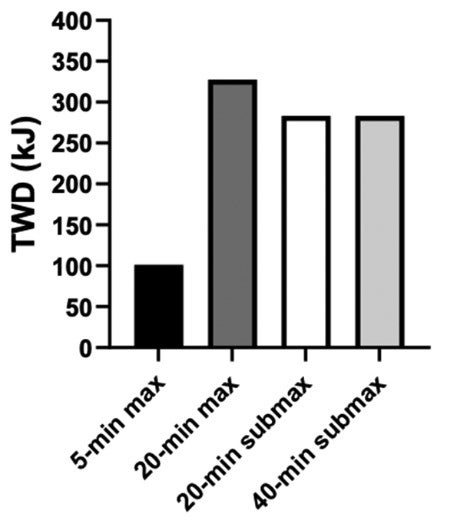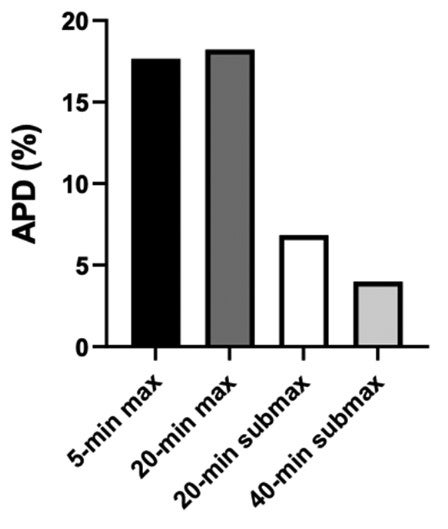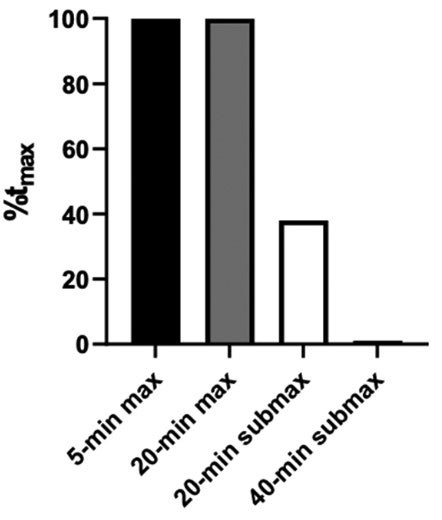
A recurring joke among the my coaching partners these days is the advice their GPS watches give them when we finish an uncomplicated run. “You need to have 42 hrs of restoration,” the algorithm tells them, even while they are not even respiratory tough. Hard interval exercise sessions, on the other hand, don’t feel to impress the watches.
Where by do these numbers come from? The algorithms are proprietary (Garmin’s, for example, are presented by a Finnish enterprise called Firstbeat Analytics, which it acquired in 2020), but they’re based on a notion that is using on larger value in the age of ubiquitous wearable equipment: training load. Athletes made use of to keep track of their schooling with a hodgepodge of distinct variables: miles run, duration of session, ordinary ability, coronary heart price, and so on. Now that comprehensive 2nd-by-2nd instruction knowledge can be recorded and analyzed with nominal energy, they are combining many variables into a one measure of how a great deal anxiety a supplied training imposed on their overall body. The tactic has wonderful opportunity to finetune the sensitive harmony amongst coaching and recovery—but, according to a new research in the Global Journal of Sports activities Physiology and Effectiveness, it also has some essential flaws.
It’s very clear that neither duration nor depth, on their individual, paint a comprehensive photograph of how tough a training is. As University of Calgary athletics scientist Louis Passfield and colleagues from Calgary and the College of Rome Foro Italico make clear in the new paper, the plan of combining them in a one measure of coaching load dates back to study in the 1970s. A supplied dose of schooling, the theory went, should generate corresponding will increase in both of those fitness and tiredness that would rise and drop at attribute costs just after every single exercise routine. Add up the gathered exercise from all your past exercise routines, subtract the amassed fatigue, and you have obtained an estimate of how fast you can race at that moment, as well as what dose of schooling or rest you want next. This is the elementary perception that underlies most contemporary coaching software.
The easiest illustration of a instruction load calculation is to multiply length (in minutes) by intensity (your subjective analysis of how really hard the exercise session was, on a scale of one particular to 10). There are plenty of possibilities that use metrics like ability or tempo or heart fee as an alternative of subjective hard work, that determine dose on a 2nd-by-second basis as a substitute of averaged above the entire exercise, or that break training down into unique intensity zones. Various research have when compared distinctive variations of teaching load to each and every other. The issue, in accordance to Passfield and his colleagues, is that all these comparisons are round: no a single understands how to specific the serious coaching load professional by the overall body, so figuring out regardless of whether one definition agrees with another doesn’t response the most vital dilemma.
There are in fact some issues with the uncomplicated period-moments-intensity look at of schooling load. A memorably titled paper (“Would You Somewhat Have A single Large Rock or Tons of Small Rocks Dropped on Your Foot?”) revealed very last year by Andrew Renfree of the College of Worcester and his colleagues illustrated some of them. For instance, a demanding interval training of two all-out 400-meter repeats (2 minutes x 10 out of 10 effort and hard work = 20) could possibly have a lower schooling load than the subsequent ten minutes of easy cool-down jogging (10 minutes x 3 out of 10 energy = 30). Even with tweaks that give a lot more weight to bigger-depth education, several variations of teaching load (which include the ones loaded on my teaching partners’ sporting activities watches) appear to overvalue period.
So what is the true measure of how hard a workout is? Passfield and his colleagues make the case for what they get in touch with acute general performance decrement, or APD. If you do some type of work out examination, like a 5-minute time trial, then do a exercise, then repeat the 5-moment time trial, the overall performance variation between the two time trials tells you accurately how a lot the exercise session took out of you. Obviously this isn’t a simple way of monitoring your schooling, mainly because you just cannot do a mini-race just before and after each education session. But in the lab, this procedure provides scientists a way of evaluating the impact of various types, intensities, and durations of workout.
Listed here’s an example from some prior exploration by Passfield and his colleagues. They when compared 4 distinctive cycling routines: 5 minutes all-out 20 minutes all-out 20 minutes at a submaximal tempo and 40 minutes at an even less complicated submaximal pace. A standard way of evaluating the training load of these workouts would be to glance at the complete do the job accomplished (TWD), which requires multiplying cycling electrical power by time. Here’s what TWD appears to be like for every exercise session:

Even although the five-moment all-out exercise was as really hard as the topics could go, it does not accumulate much complete function since it’s so quick. The other 3 workouts, with varying period and intensity, have fairly very similar TWD.
In contrast, here is the APD, which is the % slowdown in five-minute time trial from in advance of to just after just about every training:

Now the results correspond greater to our instinct. The two all-out classes, regardless of regardless of whether they’re 5 or 20 minutes, bring about a big slowdown. The two submaximal sessions have a a lot lesser impact—a convincing illustration of the likely negatives of extremely basic training load metrics like TWD.
This nonetheless does not clear up the functional challenge of how to keep track of training in the genuine entire world. The authors propose yet another metric named %tmax, which compares how extensive the exercise lasted to how prolonged you could have sustained that rate ahead of achieving exhaustion. A 50 percent-hour trip at a tempo you could have sustained for 5 several hours has a %tmax of 10 p.c a 30-moment run at your 40-moment all-out speed has a %tmax of 75 %. Here’s extra information from the exact study, comparing the %tmax for the four workouts:

The %tmax info presents a fairly great approximation of the APD info. Given that race tempo at different distances follows a predictable curve (see right here), you—or, ideally, an algorithm in your schooling software—can use race performances at any a few distances to estimate your %tmax for workouts at any presented tempo. You can also generalize the approach to interval exercise routines: if you do ten repeats at a rate you could have sustained for 15 repeats, your %tmax for the session is 67 %. But it breaks down for much more advanced multi-pace exercises, or for development operates where by the tempo retains altering.
The scientists also float some easier options, like your subjective perception of energy or your respiratory level (which is a good proxy for subjective effort) at the stop of the session. In concept, the upper body straps used for coronary heart amount screens can evaluate respiratory fee, and that gives an objective metric for those who really don’t like relying on the seeming imprecision of thoughts. In both of those cases, the assumption baked in is that duration on its very own isn’t all that significant: what matters is how breathless you are at the close many thanks to what ever blend of duration and intensity you just did. That assumption may possibly function for monitor cyclists, but I’d be careful about building the identical assumption for an ultrarunner returning from a 5-hour run. There are forms of fatigue—and of teaching stimulus—that could not go away you out of breath.
Whether or not any of these alternate training load metrics will do a better position of guiding training remains to be observed. For now, Passfield and his colleagues’ advice is to keep track of the duration and depth of your teaching independently, and to take care of with caution any insights derived from combining them into a single schooling load metric. I’m not rather as skeptical as they are about the usefulness of existing teaching load models—but then yet again, I really don’t have a extravagant watch that keeps telling me to choose 3 times off just about every time I run.
For much more Sweat Science, be part of me on Twitter and Facebook, indication up for the electronic mail e-newsletter, and verify out my e book Endure: Mind, System, and the Curiously Elastic Restrictions of Human Effectiveness.
The article Your Enjoy Does not Know How Much Recovery You Will need appeared initial on Outside On line.

More Stories
Protein Shakes are an Superb Well being Foods
A Basic and Wholesome Meals Nourishment Tutorial
Foodstuff Alternative and Your Mind Well being